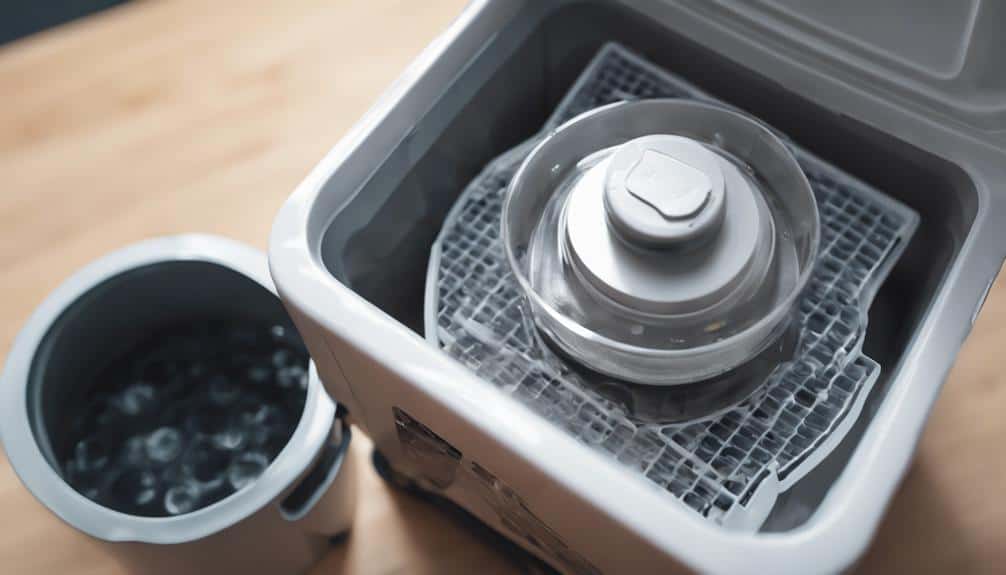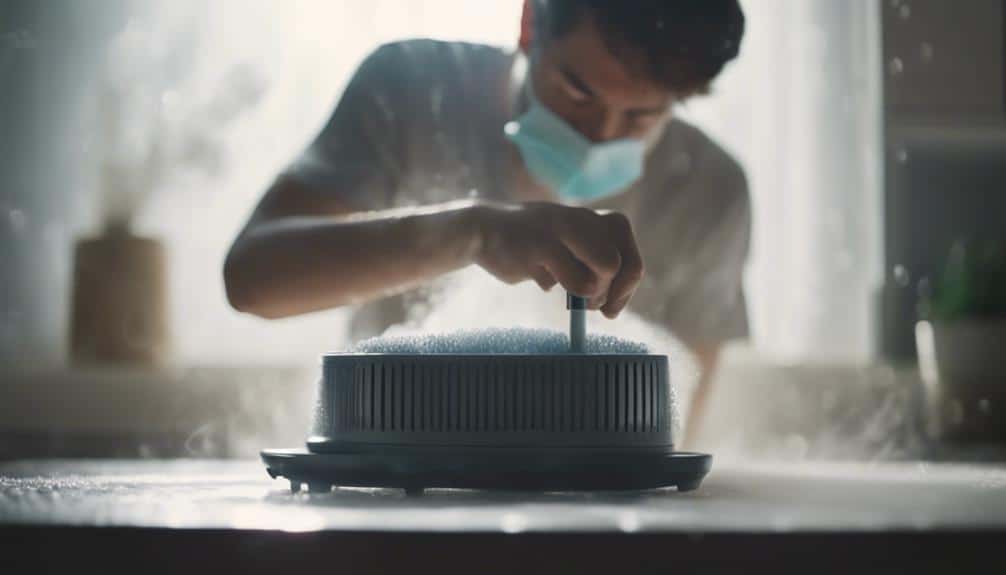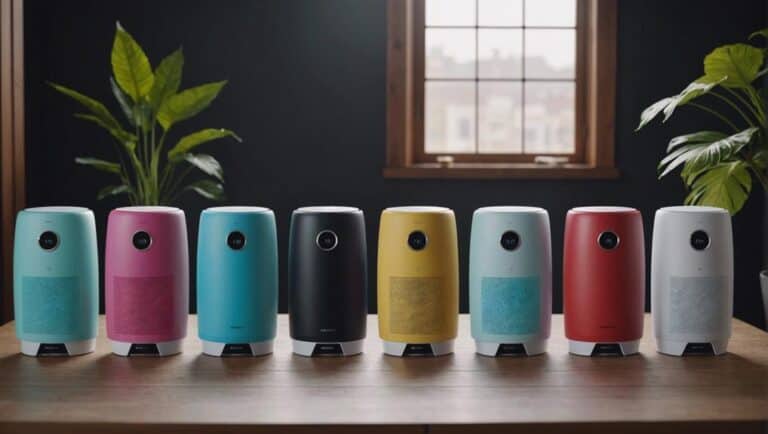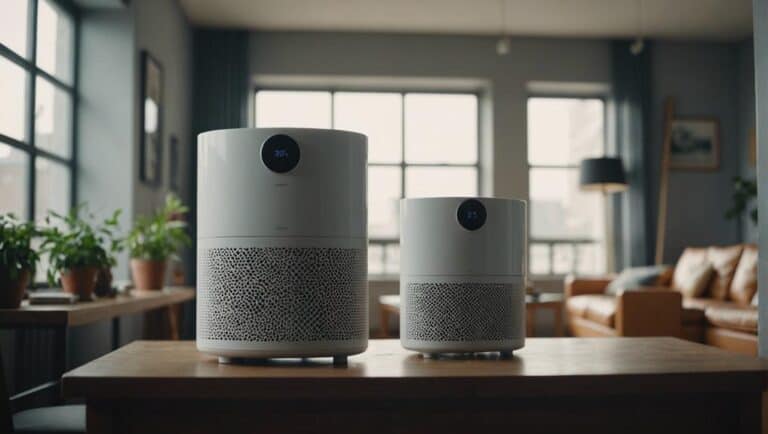3 Easy Steps to Clean Your Humidifier Filter Efficiently
When it comes to maintaining a healthy home environment, one aspect that many of us might overlook is the cleanliness of our humidifier filter.
Did you know that a dirty filter can lead to poor air quality and reduced efficiency of your device?
Well, fear not, because we are here to guide you through three simple steps that will help you clean your humidifier filter efficiently.
By following these easy steps, you’ll make certain that your device works effectively and continues to provide you with clean, moist air.
Unplug and Empty Humidifier
Before cleaning the humidifier filter, unplug the device and empty the water tank completely to guarantee safety and efficiency. Ensuring the humidifier is disconnected from the power source eliminates the risk of electric shock during the cleaning process. Additionally, emptying the water tank prevents any spillage or leaks that could occur when handling the humidifier.
Properly disassembling the humidifier is essential in accessing the filter for cleaning. This step allows for a thorough cleaning of the filter, ensuring best performance. By starting with a clean and empty humidifier, the filter cleaning process becomes more efficient. It sets the stage for a more effective removal of any built-up residue or impurities within the filter, ultimately improving the overall air quality produced by the humidifier.
Following these steps not only enhances the safety of the cleaning process but also contributes to the efficiency of the humidifier in maintaining a healthy environment.
Rinse Filter With Water
After unplugging and emptying the humidifier, proceed to thoroughly rinse the filter with water to effectively remove dirt, dust, and debris that may be trapped within it. Cleaning the filter is crucial for maintaining clean air in your home.
To rinse thoroughly, hold the filter under running water, making sure all sides are exposed to the water flow. Gently rub the filter to dislodge any stubborn particles.
For a deeper clean, consider using a vinegar solution. Manufacturers often recommend using white vinegar to clean a humidifier filter. The acidity of the vinegar helps break down mineral deposits and disinfect the filter.
Once you’re satisfied with the cleanliness, allow the filter to air dry completely before reassembling it back into the humidifier.
Regularly cleaning the filter and emptying the water tank can prevent a dirty filter from circulating impurities in the air and ensure your humidifier functions at its best.
Reassemble and Refill Humidifier

To reassemble and refill your humidifier, securely attach the filter back in place following the manufacturer’s instructions, ensuring proper alignment and a leak-free fit. It’s important to check that all components are correctly aligned to prevent any leaks or operational issues.
Once the filter is securely in place, refill the humidifier with clean water, making sure to adhere to the recommended water level specified by the manufacturer. Before adding water to the tank, verify that the filter is correctly positioned to avoid any potential damage.
After the refill, plug in the humidifier and adjust the settings as necessary to ensure efficient operation. By following these steps diligently, you can guarantee that your humidifier functions optimally and provides the desired level of humidity in your environment.
Remember to regularly clean and maintain your humidifier to prolong its lifespan and maintain its efficiency.
Conclusion
To sum up, following these three easy steps to clean your humidifier filter efficiently is essential for maintaining air quality and ensuring peak device performance.
Regular maintenance will help prolong the lifespan of your humidifier and prevent the buildup of harmful bacteria.
By taking the time to clean your filter regularly, you can enjoy cleaner, healthier air in your home.






